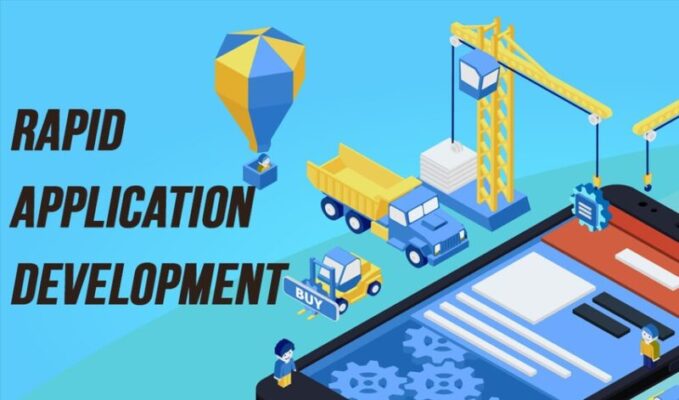
Rapid Application Development – How and When you Should Use It
Last updated on June 23rd, 2022 at 04:28 am
Are you spending a lot of costs planning and using sophisticated protocols in building business software? Want a fast, simple, and excellent way to develop your program without much expense? Worry not because Rapid Application Development (RAD) will build your business idea into a testable prototype within your schedule.
At the end of this article, you’ll be able to answer what is Rapid Application Development and How and when to use it.
Definition of RAD
You’re probably wondering what is Rapid Application Development, right? Well, RAD is a godsend SLDC infrastructure that has helped thousands of companies to build profitable software- yours could be too-. You do not only attain a sustainable program, but you get to know how the RAD process started from the word go. RAD technicians also discuss your specification and preferences in your presence. What more do you want when RAD is at your disposal?
How to use Rapid Application Development
To get started with Rapid Application Development, here are four main steps to follow:
Step 1: Determine the user requirement
RAD requires project planning like any other but is compressed. For that reason, all parties like programmers, software designers, and yourself meet to discuss why RAD is needed in your company. You will also discuss issues like the project’s goals, its challenges, the overall cost, and how the software should be developed and tasted.
Step 2: Develop a prototype
In this part, you and other parties review the data you gathered during the project analysis. The software developers group, filter, standardize and code that data to build a prototype. In this case, a prototype is like your initial sketch work where you make revisions.
The same case applies to RAD. These technicians will revisit the prototype, revise the program, add or erase some information they do not want. Soon, they will test the prototype on your watch. Your suggestion and specification will be of much help in this area.
Phase 3: Continuous developments
Now you have the prototypes already designed, and some components changed. Still, more advancements and improvements can be made using iterative design. It is a repetitive and periodic process where the prototype is tested, renewed, and improved regularly.
From that point, you will work hand-in-hand with the IT specialists to polish the prototypes thoroughly. The process goes on until the prototypes successfully pass the test. But remember that you are the last verdict of the test. The technician will make you examine the sample until you are satisfied.
Phase4: Cutover
The product is now ready for use. Still, the software is flexible since you can make final changes before the system goes launching. After all, it is clear that you should first launch the product and educate your staff on using it.
When should you use the RAD?
You can implement RAD in your business:
1. When you have a modularized software
If the software developer cites your idea as breakable, then RAD should apply in building the software. Otherwise, working with wholesome programs can be challenging to develop but dividing the tasks into functional units is easy. That is the same idea with the RAD prototype, where each segment is designed individually and assembled later.
2. When you need to save cost
First, the project requires minimal planning and less workforce. You do not have to employ a project manager or set up a planning committee. You could even work with one IT specialist. Secondly, RAD utilizes reusable prototypic components, which are cost-saving.
3. When you need fast service delivery
In comparison to the hand-design traditional SLDC methods, RAD uses automated designing and coding. On the contrary, the conventional platforms required you to wait for ages for the process to be complete.
4. When you need to expedite your software development
RAD lets you follow your software making from the infancy stage up to the last step. Therefore, your views, suggestion, sand values are used to build the software.
Hopefully, you’ll find this information helpful. Do not wait for your business idea to get wasted while RAD is at your service. Keep your idea a secret and search for trustworthy developers.
Read Dive is a leading technology blog focusing on different domains like Blockchain, AI, Chatbot, Fintech, Health Tech, Software Development and Testing. For guest blogging, please feel free to contact at readdive@gmail.com.
